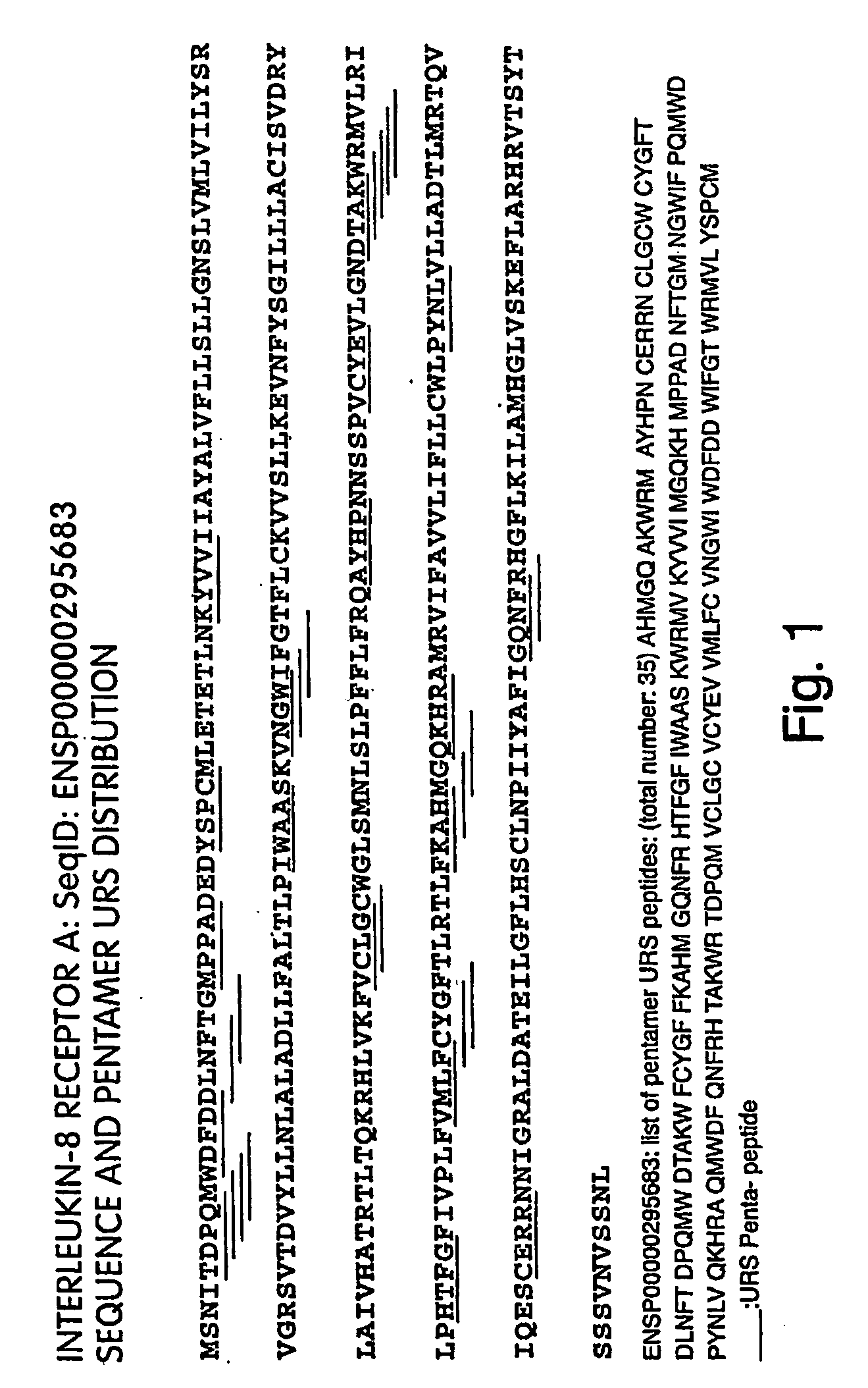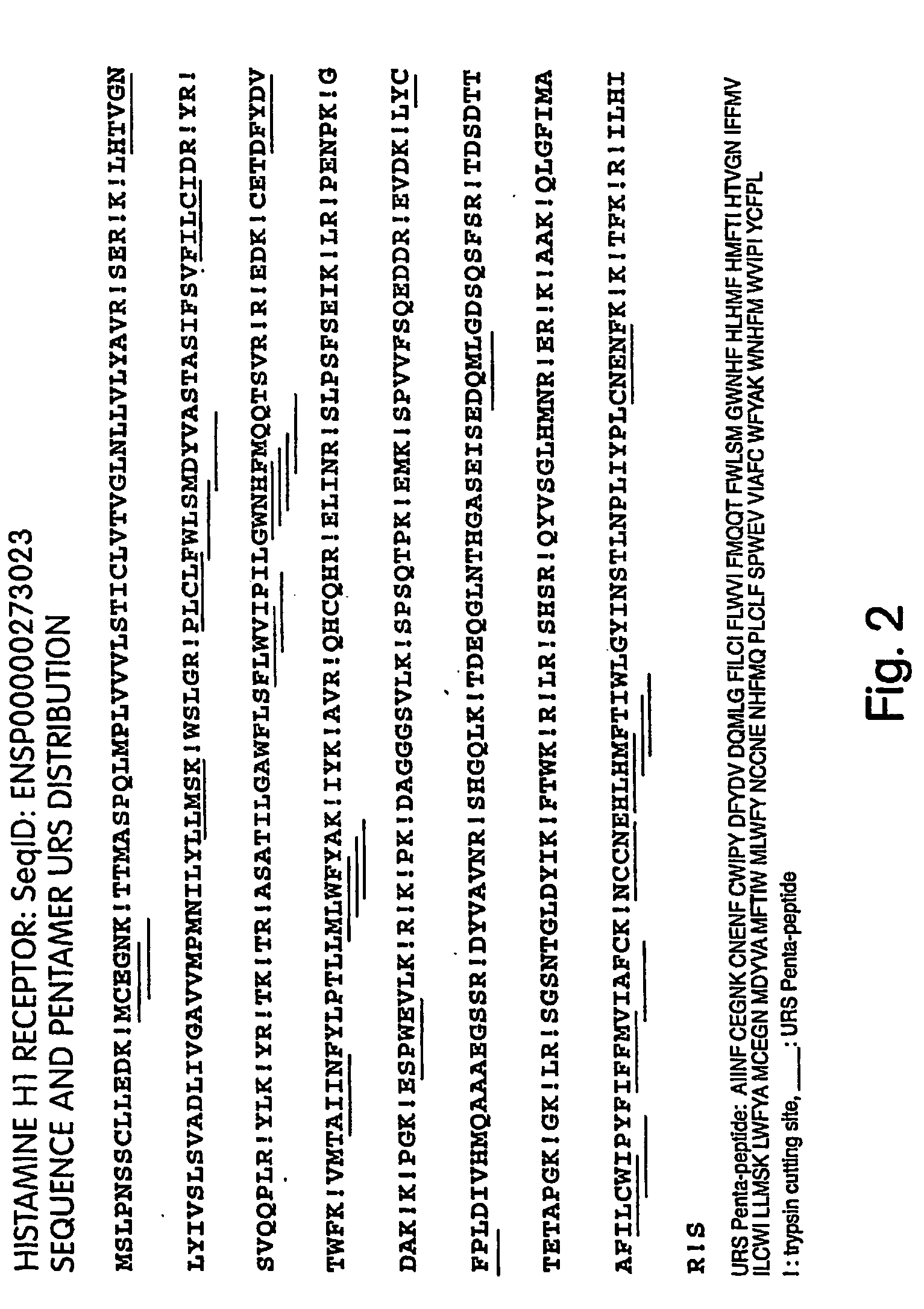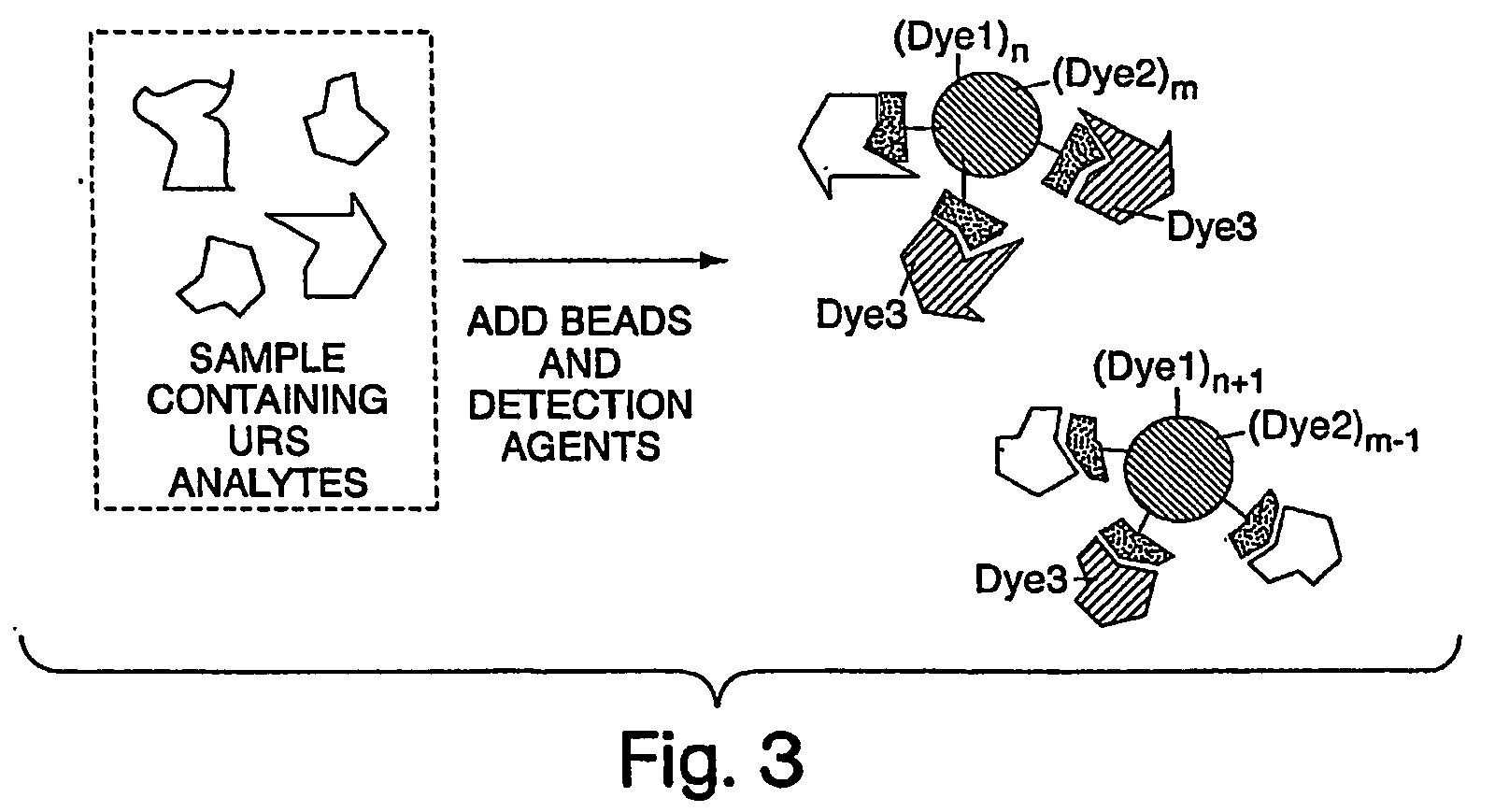Unique recognition sequences and methods of use thereof in protein analysis
a recognition sequence and protein technology, applied in the field of unique recognition sequences and methods of use in protein analysis, can solve the problems of difficult reagent generation, less specificity of detection agents against native proteins, and a lot of time (years) and resources
- Summary
- Abstract
- Description
- Claims
- Application Information
AI Technical Summary
Benefits of technology
Problems solved by technology
Method used
Image
Examples
example 1
Identification of Unique Recognition Equences within the Human Proteome
[0264] As any one of the total 20 amino acids could be at one specific position of a peptide, the total possible combination for a tetramer (a peptide containing 4 amino acid residues) is 204; the total possible combination for a pentamer (a peptide containing 5 amino acid residues) is 205 and the total possible combination for a hexamer (a peptide containing 6 amino acid residues) is 206. In order to identify unique recognition sequences within the human proteome, each possible tetramer, pentamer or hexamer was searched against the human proteome (total number: 29,076; Source of human proteome: EBI Ensembl project release v 4.28.1 on Mar. 12, 2002, http: / / www.ensembl.org / Homo—sapiens / ).
[0265] The results of this analysis, set forth below, indicate that using a pentamer as a unique recognition sequence, 80.6% (23,446 sequences) of the human proteome have their own unique recognition sequence(s). Using a hexamer...
example 2
Identification of Unique Recognition Sequences within all Bacterial Proteomes
[0273] In order to identify pentamer URSs that can be used to, for example, distinguish a bacterium from a pool of all other bacteria, each possible pentamer was searched the NCBI database (http: / www.ncbi.nlm.nih.gov / PMGifs / Genomes / eub_g.html, as of Apr. 10, 2002). The results from this analysis are set forth below. Results and Data:
DatabaseNumber ofIDunique(NCBIpentamersRefSeq ID)Species Name6NC_000922Chlamydophila pneumoniae CWL02937NC_002745Staphylococcus aureus N315 chromosome40NC_001733Methanococcus jannaschii small extra-chromosomal element58NC_002491Chlamydophila pneumoniae J13884NC_002179Chlamydophila pneumoniae AR39135NC_000909Methanococcus jannaschii206NC_003305Agrobacterium tumefaciens str. C58(U. Washington) linear chromosome298NC_002758Staphylococcus aureus Mu50 chromosome356NC_002655Escherichia coli O157:H7 EDL933386NC_003063Agrobacterium tumefaciens str. C58(Cereon) linear chromosome479NC_...
example 3
Identification of Specific Pentamer Unique Recognition Sequences
[0274] As indicated above, each possible tetramer, pentamer or hexamer was searched against the human proteome (total number: 29,076; Source of human proteome: EBI Ensembl project release 4.28.1 on Mar. 12, 2002, http: / / www.ensembl.org / Homo—sapiens / ) to identify unique recognition sequences (URSs).
[0275] Based on the foregoing searches, specific URSs were identified for the majority of the human proteome. FIG. 1 depicts the pentamer unique recognition sequences that were identified within the sequence of the Interleukin-8 receptor A. FIG. 2 depicts the pentamer unique recognition sequences that were identified within the Histamine H1 receptor that are not destroyed by trypsin digestion. Further Examples of pentamer unique recognition sequences that were identified within the human proteome are set forth below.
No. ofpentamerSequence ID*URSsPentamer URSsENSP000000002339AMPVS CATQG CFTVW ICFTV MPNAM PHAMP(SEQ ID NOs:1-...
PUM
| Property | Measurement | Unit |
|---|---|---|
| Fraction | aaaaa | aaaaa |
| Fraction | aaaaa | aaaaa |
| Fraction | aaaaa | aaaaa |
Abstract
Description
Claims
Application Information
 Login to View More
Login to View More - R&D
- Intellectual Property
- Life Sciences
- Materials
- Tech Scout
- Unparalleled Data Quality
- Higher Quality Content
- 60% Fewer Hallucinations
Browse by: Latest US Patents, China's latest patents, Technical Efficacy Thesaurus, Application Domain, Technology Topic, Popular Technical Reports.
© 2025 PatSnap. All rights reserved.Legal|Privacy policy|Modern Slavery Act Transparency Statement|Sitemap|About US| Contact US: help@patsnap.com



